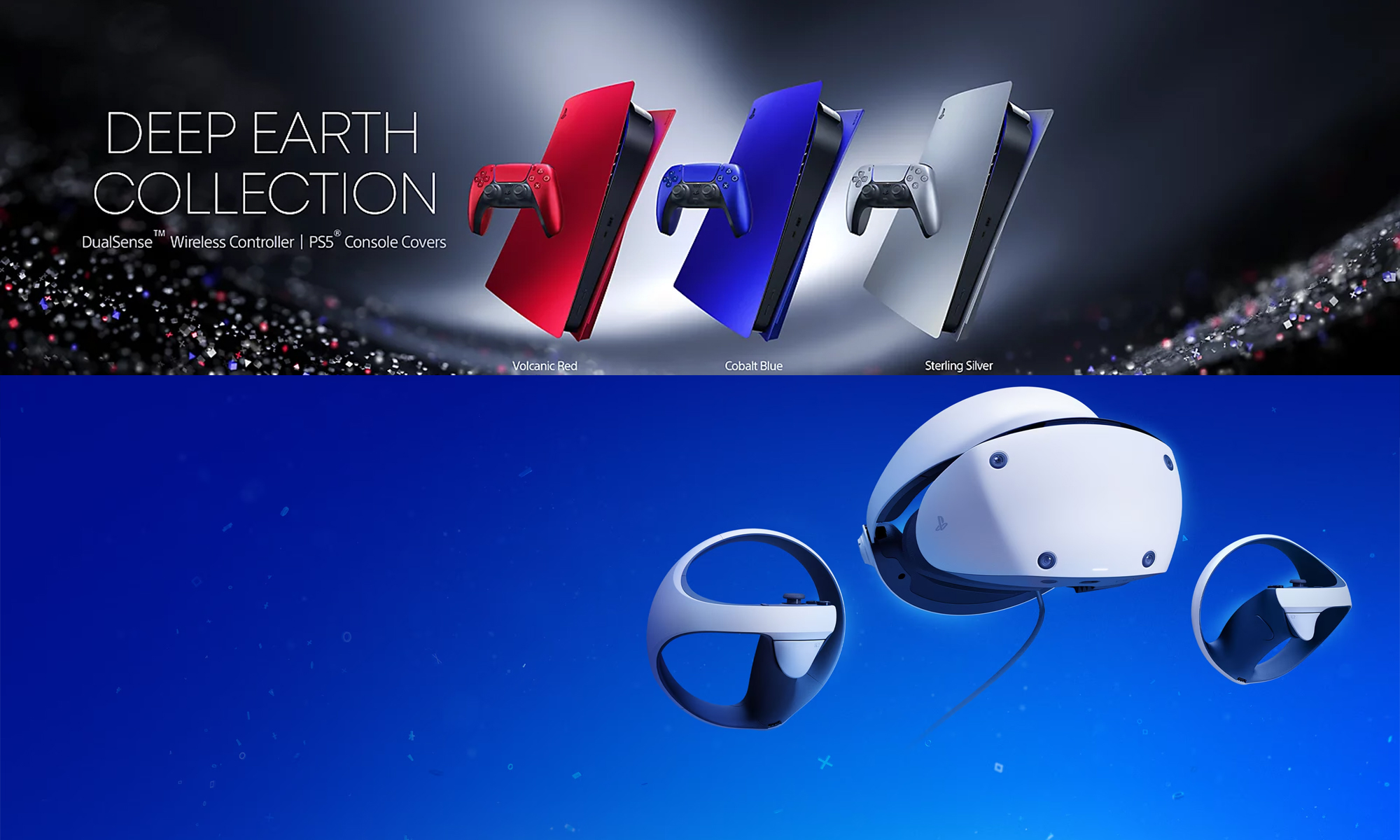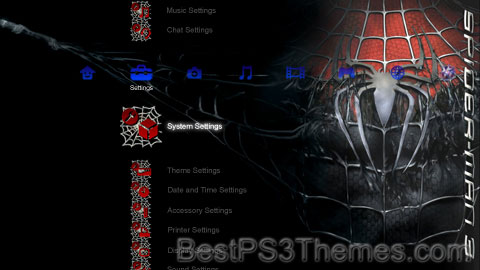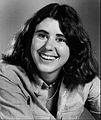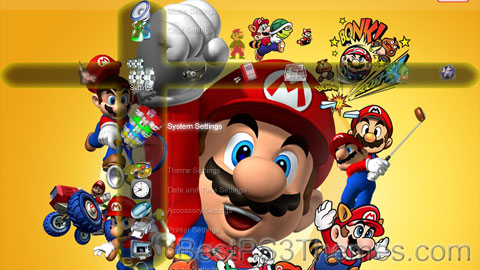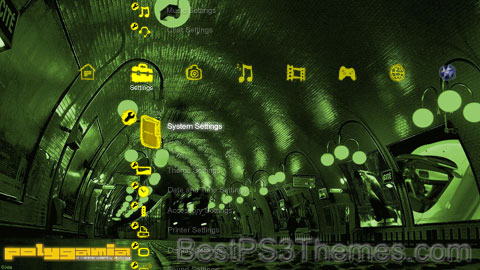Star Wars: The Force Unleashed theme by YASAI
Download: StarWarsTheForceUnleashed_4.p3t

(3 backgrounds)
| Star Wars: The Force Unleashed | |
|---|---|
 | |
| Developer(s) | LucasArts[a] |
| Publisher(s) | LucasArts[b] |
| Director(s) | Haden Blackman |
| Producer(s) |
|
| Designer(s) |
|
| Programmer(s) | Cédrick Collomb |
| Artist(s) | Matt Omernick |
| Writer(s) |
|
| Composer(s) | Mark Griskey |
| Platform(s) | |
| Release | |
| Genre(s) | Action-adventure, hack and slash |
| Mode(s) | Single-player, multiplayer[c] |
Star Wars: The Force Unleashed is an action-adventure game developed and published by LucasArts, and part of The Force Unleashed multimedia project. It was initially developed for the PlayStation 2, PlayStation 3, Wii, and Xbox 360 consoles and on iOS, second-generation N-Gage, Nintendo DS, PlayStation Portable, and Java-equipped mobile phone handhelds.[1] The game was released in North America on September 16, 2008, in Australia and Southeast Asia on September 17, and in Europe on September 19. LucasArts released downloadable content for the PlayStation 3 and Xbox 360 consoles.[2] An Ultimate Sith Edition of the game, containing both new and previously released downloadable content, was released in November 2009,[3] and later ported to the macOS and Microsoft Windows. An enhanced remaster of the Wii version, developed by Aspyr, was released on Nintendo Switch on April 20, 2022.[4]
The project bridges the first two Star Wars trilogies, acting as an origin story for both the united Rebel Alliance and the Galactic Civil War depicted in the original trilogy. The game introduces a new protagonist named "Starkiller", a powerful Force user trained as Darth Vader's secret apprentice, who is tasked with hunting down Jedi survivors of the Great Jedi Purge while trying to keep his existence a secret. However, after he is tasked with planting the seeds of what would become the Rebel Alliance, which Vader plans to take advantage of to overthrow the Emperor, Starkiller begins to question his own morality and to slowly redeem himself. Following The Walt Disney Company's acquisition of Lucasfilm in 2012, the game became part of the non-canonical Star Wars Expanded Universe (also known as Star Wars Legends), and an alternative origin for the Rebel Alliance and the Galactic Civil War was given in other forms of Star Wars media, such as Star Wars Rebels.
Star Wars: The Force Unleashed received generally positive reviews from critics, with praise for its story, voice acting, physics, art and soundtrack, but criticism for its linear gameplay and technical issues. The game was a bestseller in the United States and Australia, with over one million copies sold its debut month. As of February 2010[update], the game had sold over seven million copies, and was the fastest-selling Star Wars video game of its time.[5] A sequel, Star Wars: The Force Unleashed II, was released in October 2010.[6]
Gameplay[edit]
The Force Unleashed is a third-person action game in which the player's character's weapons are the Force and a lightsaber.[7] Developers treated the main character's lightsaber like another Force power, and wanted to ensure "something visceral and cool" happened with each button-push.[7] The game has a combo system for stringing lightsaber attacks and for combining lightsaber attacks with Force powers.[7] Experience points earned by killing enemies and finding artifacts can be used to increase Starkiller's powers and traits.[8] The gameplay is intended to be easy to learn; the development team included "horrible" gamers to help ensure the game's accessibility.[9] Players can casually run and gun through the game, but the game rewards those who take a stealthy, more tactical approach.[9] The game includes enemies that are easy to overcome; game difficulty arises from presenting these enemies in large numbers that can wear down the player's character.[10] Additionally, enemies learn from the player's character's attacks; using the same attack on different characters can sometimes lead to the player's character doing less damage.[11] The enemies, which number over 50, have various strengths and weaknesses; developers faced the difficulty of effectively placing them throughout the game's varied environments.[10] Players must also carefully manage their automatically-regenerating Force energy when using exceptionally strong Force abilities, as overuse of them can drop the Force meter below zero to a negative level, incurring Force debt that disables all Force powers for a period of time until the auto-regeneration removes the debt; the more Force debt incurred, the longer the player will be without Force abilities.
Version differences[edit]
The Force Unleashed has different features across platforms. The PlayStation 3 and Xbox 360 versions, powered by the Ronin engine, utilize high-definition graphics and advanced dynamic destruction effects. These versions also support downloadable content in the form of two expansions that expand upon the game's plot.[citation needed] The Nintendo versions use motion controls to implement Starkiller's attacks, with the Wii version using the Wii Remote to execute lightsaber attacks and the Nunchuk to wield Force powers,[12] while the Nintendo DS version utilizes the touchscreen to execute attacks, where single actions can be executed by tapping a certain region of the screen (with each region corresponding to a particular action, such as jumping or Force pushing), while more advanced attacks can be performed by dragging the stylus across neighboring regions of the screen.[13]
The PlayStation 2 and PlayStation Portable versions are identical in content to the Wii version, which is different than the PS3 and Xbox 360 version. Since these versions don't support or use downloadable content, they exclusively intersperse certain levels with three of the five Jedi trials that Starkiller completes at the Jedi temple in Coruscant to further hone his abilities, which are all included in a DLC pack for the PS3 and Xbox 360 versions.[14] The PSP version also exclusively features five additional "historical" bonus levels that re-enact pivotal scenes and duels throughout the Star Wars saga,[15] as well as special scenarios that can be played with as different Star Wars characters who have the same abilities in the standard single-player mode. The Nintendo DS version utilizes 3-D graphics like all other major versions, but lacks voice acting.
The Wii and handheld versions support multiplayer. Two players duel against each other as famous Jedi and Sith in the Star Wars saga in the Wii version,[12] while the handheld versions utilize wireless multiplayer for a four-player battle mode.[16][15]
The Switch version is a port of the Wii version, with an option to use button controls instead of motion controls. These optional motion controls are available in both the Single Player and Dual Modes. The Nintendo Switch Pro Controller is also supported.
Plot[edit]
Shortly into the Galactic Empire's rule, Imperial spies locate a Jedi survivor of the Great Purge named Kento Marek on Kashyyyk. Darth Vader arrives as the planet is invaded and eliminates any Wookie resistance between him and the fugitive Jedi. Reaching Kento's home,[17][18] Vader easily defeats him in a lightsaber duel but senses someone far more powerful nearby. Initially believing it to be Kento's Jedi Master, Vader prepares to execute the defiant Jedi until his lightsaber is suddenly force pulled from his hand by Kento's son Galen. Sensing the boy's strong connection to the Force, Vader proceeds to kill Kento and an Imperial squadron after they try to execute Galen and secretly takes him as his apprentice with only a select few knowing of his existence.
Years later, an adult Galen (given the alias "Starkiller") completes his Sith training. He's sent by Vader to eliminate several Jedi survivors across the galaxy in preparation for assassinating the Emperor so that the duo can rule the galaxy together. Starkiller travels aboard his personal ship, the Rogue Shadow, alongside training droid PROXY (who is programmed to try and kill Starkiller) and Imperial pilot Juno Eclipse.[19] Starkiller's targets include Rahm Kota, a Clone Wars veteran and leader of a militia;[d] Kazdan Paratus, insane after years of isolation on Raxus Prime;[e] and Shaak Ti, who's hiding on Felucia. Two of these three Jedi masters, Kota and Ti, inform Starkiller that they have foreseen that soon Vader will no longer be his master before he finishes them. After the latter's death, Starkiller returns to Vader once more, but the Emperor arrives, his spies having uncovered Starkiller's existence. To prove his loyalty to the Emperor, Vader appears to kill his apprentice by stabbing him and hurling him through space.
Unbeknownst to the Emperor, Vader has Starkiller recovered and resuscitated. Vader sends Starkiller to foster a rebellion among the Empire's enemies, hoping to distract the Emperor's spies for Vader to overthrow him. Starkiller rescues Juno, who had been arrested and branded a traitor to the Empire, and escapes with her and PROXY. Looking for allies to aid his mission, Starkiller finds an alive Kota on Cloud City, rendered blind from Starkiller's earlier victory over him and reduced to alcoholism, and rescues him from Imperial forces.
The group travels to Kashyyyk to locate Kota's contact, senator Bail Organa. Starkiller discovers his old home and meets his father's spirit, who expresses remorse for Starkiller's upbringing under Vader.[f] To gain Bail's trust, Starkiller rescues his captive daughter Princess Leia Organa, and liberates the enslaved Wookiees at her request. Starkiller learns from Kota that Bail went missing on Felucia, after searching for Shaak Ti in the hope that she would rescue Leia. Starkiller travels to Felucia to find Bail, discovering that he'd been captured by Shaak Ti's former apprentice Maris Brood, who succumbed to the Dark Side after her master's death. Starkiller defeats Brood but spares her life, and convinces Bail to join the rebellion.
To convince more dissidents to do the same, Vader suggests that Starkiller attack a Star Destroyer facility on Raxus Prime to show that the Empire is vulnerable. Juno learns that Starkiller is still serving Vader and chastises him, but agrees to keep silent. On Raxus Prime, Starkiller is attacked by PROXY, who attempts to fulfill his programming by killing him, but Starkiller defeats him, destroys the facility, and pulls a falling Star Destroyer out of the sky using the Force.[g] Bail meets with fellow senators Mon Mothma and Garm Bel Iblis on Corellia to formally organize a rebellion, only for Vader to arrive and arrest them and Kota. After overpowering Starkiller, Vader reveals that he was merely a tool to lure out the Empire's enemies, and had never intended to use him to overthrow the Emperor. Starkiller escapes after PROXY sacrifices himself by attacking Vader.
Juno rescues Starkiller, who uses the Force to see that Kota and the senators are being held on the Death Star. After Juno kisses him and he bids farewell, Starkiller battles his way through the station to reach the Emperor's throne room. Vader confronts him, but Starkiller defeats his former master and faces the Emperor, who tries to goad him into killing Vader so Starkiller can take his place. Kota tries to attack the Emperor, but is subdued with Force lightning. At this point, the player must choose between saving Kota (Light Side) or killing Vader (Dark Side).
- If the player chooses the Light Side, Starkiller defeats the Emperor, but spares him at Kota's urging. The Emperor unleashes Force lightning at Kota, but Starkiller absorbs it, sacrificing himself to allow Kota and the senators to escape on the Rogue Shadow. The Emperor and Vader become concerned that Starkiller has become a martyr to inspire the newly-formed Rebel Alliance. On Kashyyyk, the senators proceed with the rebellion and Leia chooses Starkiller's family crest as their symbol. Kota tells Juno that among Starkiller's dark thoughts, Juno herself was one bright spot that he held onto right until his death.[20]
- If the player chooses the Dark Side, Starkiller kills Vader and is congratulated by the Emperor, who commands him to kill Kota to sever his ties to the Jedi and become a Sith Lord. Starkiller instead attacks the Emperor, who foils his attempt and then crushes him with the Rogue Shadow, severely injuring Starkiller and killing Juno, Kota, and the senators. Starkiller later awakens to find his body being grafted with armor to continue serving the Emperor, though he assures Starkiller that he'll be replaced once he finds a new apprentice just as Vader before him.
Downloadable content[edit]
Three downloadable content (DLC) levels for the game were released for the PS3, Xbox 360 and computer versions of the game. The first one is set during the events of the main story and explores more of Starkiller's background,[21] while the second and third ones expand upon the non-canonical Dark Side ending of the game, taking place in their own alternate timeline.[22][23] All three DLC packs are included on-disc in the Ultimate Sith Edition for all abovementioned three platforms.
The Coruscant DLC depicts Starkiller, at some point before traveling to Kashyyyk, deciding to visit the abandoned Jedi Temple to learn more about his identity and connection to the Force. After fighting his way past the Imperial security forces, he reaches the old Council Chambers, where he meets Kento Marek's spirit who tells him that he needs to pass three Jedi trials. Upon doing so, Starkiller is faced with a mysterious Sith warrior, revealed to be a dark reflection of himself created by his own fear. Following his defeat, Starkiller finds a holocron left by Marek, who reveals himself as his father and implores him to return to the light side. Starkiller then returns to the Rogue Shadow to resume his current mission.
The Tatooine and Hoth DLC's are set during alternate depictions of A New Hope and The Empire Strikes Back, respectively, and present Starkiller as the Emperor's trusted assassin, referred to as "Lord Starkiller".
In the Tatooine DLC, he's tasked with retrieving the Death Star plans stolen by the Rebel Alliance, which have been tracked to Tatooine. He visits Jabba the Hutt, who has knowledge on the plans' whereabouts, revealing that they're in the possession of two droids at Mos Eisley. When Starkiller refuses to work for him, Jabba attempts to have Starkiller eaten by his rancor. Killing the beast, Starkiller escapes from Jabba's palace after massacring Jabba's mercenaries, including Boba Fett. At Mos Eisley, Starkiller kills Jedi Master Obi-Wan Kenobi after a duel which allows the droids to board the Millennium Falcon, though Starkiller manages to place a tracking device on the ship before it takes off.
In the Hoth DLC, Starkiller partakes in the Battle of Hoth, where the Empire attacks the weakened Rebel Alliance base. During the battle, Starkiller infiltrates the base with orders to capture Luke Skywalker, who had begun training as a Jedi. Starkiller finds and defeats Skywalker in the base's hangar, severing his right hand. When the Falcon tries to take off, Starkiller seizes the ship with the Force while goading Skywalker to give into the Dark Side to rescue his friends. Skywalker attacks Starkiller with Force lightning, causing him to let go of the ship and congratulate Skywalker for embracing the Dark Side, planning to make him his apprentice the same way that Vader did to him.
Cast and characters[edit]

- Sam Witwer as Galen Marek / Starkiller — The forbidden child of a Jedi, Starkiller was adopted by his father's killer, Darth Vader, who, aware of his strong connection to the Force, raised him to be his secret apprentice. Once his training is complete, Starkiller is dispatched by his master to kill several prominent Jedi who survived the Great Jedi Purge.[24][25] Although initially acting as a villain, Starkiller is "really just [a] damaged kid."[26] Developers decided not to give Starkiller a name in the game, but the novelization reveals his real name as "Galen Marek".[27][28] Although Starkiller starts as Vader's apprentice, a focus of the game is to allow the character to evolve into "something more heroic, something greater."[25] Audio director David Collins saw a resemblance between Starkiller concept art and his friend, Witwer; Collins asked for Witwer's headshot and an audition reel, and a few weeks later Witwer sat for a 45-minute audition.[29] Witwer secured the role by demonstrating to developers his deep understanding of the character;[30] in portraying Starkiller, Witwer brought many new ideas about the character and imbued him with a sense of humanity.[26] Developers tried not to make Starkiller so evil that players would have difficulty connecting to him, aiming to strike a balance between loyalty to his master and his growing sense of disillusionment with the Empire.[26] The character's name is an homage to "Anakin Starkiller," the original name of the character that eventually became Luke Skywalker.[31][32]
- Matt Sloan as Darth Vader — A powerful Dark Lord of the Sith, high-ranking enforcer of the Empire, and Starkiller's master, who discovers Starkiller as a child and trains him.[25] In training Starkiller by having him hunt the few remaining Jedi survivors, Vader intends to prepare him to overthrow the Emperor, although there are "twists and turns" in this scheme.[25] The events depicted in The Force Unleashed are pivotal to Darth Vader's history and development, depicting him as being largely responsible for the events leading to the Galactic Civil War, depicted in the original Star Wars trilogy.[33]
- Nathalie Cox as Juno Eclipse — Rogue Shadow’s pilot and Starkiller's love interest.[34][35] Eclipse was not originally part of the game; early concepts had the apprentice as an older character who develops a connection with a young Princess Leia.[36] Star Wars creator George Lucas, uncomfortable with this idea, encouraged the developers to create a love interest.[36] The apprentice, who has had limited interaction with women when the game begins, does not at first know how to act around her.[36] Her introduction early in the game allows the relationship with Starkiller to develop, and her inclusion helps "recapture that rich ensemble feel of the original Star Wars".[36] According to Sean Williams, who wrote the novelization, the romantic storyline is the key to The Force Unleashed.[33] The name "Juno Eclipse" was originally proposed as a name for the character eventually called "Asajj Ventress" — it was ultimately rejected as insufficiently villainous.[36] The Force Unleashed project lead Haden Blackman brought the name back for the mythic quality of the name "Juno" and the duality suggested by an "eclipse."[36] Cox, in addition to strongly resembling the character's concept art, had "integrity and poise" appropriate to Juno Eclipse that helped the actor secure the role.[30]
- Cully Fredricksen as General Rahm Kota — A Jedi Master and Clone Wars veteran who provides Starkiller with additional insight into the Force and helps connect him to his Jedi heritage.[35] Developers realized early that Starkiller would require insight into the Force from someone other than Darth Vader; after rejecting the idea of this coming from the spirit of Qui-Gon Jinn or some version of Darth Plagueis, they decided to fill this role with one of Starkiller's Jedi opponents.[36] The character was conceived as a "tough-as-nails" contrast to the more traditional image of a Jedi represented by Jinn and Obi-Wan Kenobi.[36] Senior concept artist Amy Beth Christianson drew upon samurai influences for Kota's appearance.[26][36] The character changed little after being conceived; Fredricksen's own traits made the character tougher.[36] Fredricksen was the first actor cast for the project.[30]
- Adrienne Wilkinson as Maris Brood — A Zabrak survivor of the Jedi Purge and Shaak Ti's apprentice.[36] After her master's death at Starkiller's hands, Brood falls to the dark side and uses Felucia's inhabitants to wage war on the Imperial forces trying to occupy the planet. The character was originally conceived as a pirate captain, and Christianson's early art included Brood's distinctive lightsaber tonfas.[36] Wilkinson brought strength to her performance, leading to an expansion of the role with more dialogue.[36]
- David W. Collins as PROXY — Starkiller's droid sidekick, designed to constantly test his lightsaber and Force abilities, as well as deliver important messages through holographic projection.[25] Collins said PROXY has C-3PO's innocence but also is "really dangerous."[25] The companion trade paperback describes the conflict between PROXY's primary programming to kill Starkiller and its self-imposed desire to help him;[37] PROXY is eager to please Starkiller, but does not know how dangerous it can be or that there is a conflict between its programming and Starkiller's wishes.[26] Trying to avoid having PROXY's dialogue become too reminiscent of either C-3PO or the villainous HK-47 of Knights of the Old Republic, developers focused on PROXY's friendly naïvety.[26]
- Jimmy Smits as Bail Organa — Smits voices the character he played in the prequels trilogy: a Galactic Senator from Alderaan and Princess Leia's adoptive father who becomes a founding member of the Rebel Alliance.[38]
- Sam Witwer as Emperor Palpatine
- Tom Kane as Kento Marek / Captain Ozzik Sturn
- Larry Drake as Kazdan Paratus
- Susan Eisenberg as Shaak Ti
- Catherine Taber as Princess Leia Organa
- David W. Collins as Jabba the Hutt
- Dee Bradley Baker as Boba Fett
- Rob Rackstraw as Obi-Wan Kenobi
- Lloyd Floyd as Luke Skywalker
Development[edit]
Concept[edit]

Game planning began in summer 2004.[40] Initially, about six developers started with a "clean slate" to conceptualize a new Star Wars game; the small group of engineers, artists, and designers spent more than a year brainstorming ideas for what might make a good game.[41] Over 100 initial concepts were whittled down to 20 to 25 that included making the game the third entry in the Knights of the Old Republic series or having the protagonist be a Wookiee "superhero", Darth Maul, a bounty hunter, a smuggler, a mercenary or the last member of the Skywalker family living 500 years after the events of Return of the Jedi.[9][42][43][44] The decision to focus on the largely unexplored period between Revenge of the Sith and A New Hope helped energize the design team.[41] Consumer feedback helped the developers narrow in on seven concepts, and elements from those seven went into The Force Unleashed's overall concept.[9]
Production was greatly aided by concept art, which was intended to visually bridge the two Star Wars trilogies, convey the impression of a "lived-in" universe, show how the galaxy changes under Imperial rule, and to seem familiar yet new.[26][40] An off-hand comment about the Force in the game being powerful enough "to pull a Star Destroyer out of the sky" inspired an image by senior concept artist Amy Beth Christenson that became an important part of the developers' idea pitches and evolved into a major moment in the game.[26] These illustrations also inspired the creation of dozens of simple, three-dimensional animations.[40] Eventually, a one-minute previsualization video highlighting the idea of "kicking someone's ass with the Force" helped convince the designers that The Force Unleashed would be "a great game";[40][45] George Lucas, upon seeing the one-minute video, told the designers to "go make that game".[45] Once the concept was solidified, the development team grew from ten to twenty people.[46] The idea of "reimagining" the Force as "amped up" in The Force Unleashed aligned with LucasArts' overall goal of harnessing the power of the latest video game consoles to "dramatically" change gaming, specifically through the use of simulation-based gameplay.[41]
Snowboard
Snowboard theme by yvon12
Download: Snowboard.p3t
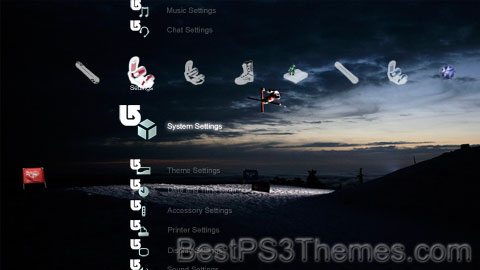
(1 background)
This article has multiple issues. Please help improve it or discuss these issues on the talk page. (Learn how and when to remove these template messages)
|

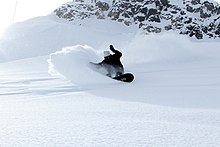
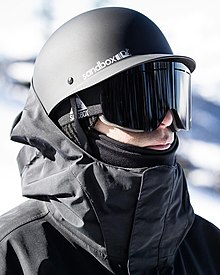
Snowboards are boards where the user places both feet, usually secured, to the same board. The board itself is wider than most skis, with the ability to glide on snow.[1] Snowboards widths are between 6 and 12 inches or 15 to 30 centimeters.[2] Snowboards are differentiated from monoskis by the stance of the user. In monoskiing, the user stands with feet inline with direction of travel (facing tip of monoski/downhill) (parallel to long axis of board), whereas in snowboarding, users stand with feet transverse (more or less) to the longitude of the board. Users of such equipment may be referred to as snowboarders. Commercial snowboards generally require extra equipment, such as bindings and special boots which help secure both feet of a snowboarder, who generally ride in an upright position.[1] These types of boards are commonly used by people at ski hills, mountains, backcountry, or resorts for leisure, entertainment, and competitive purposes in the activity called snowboarding.
History[edit]
In 1917, Vern Wicklund, at the age of 13, fashioned a shred deck in Cloquet, Minnesota. This modified sled was dubbed a "bunker" by Vern and his friends. He, along with relatives Harvey and Gunnar Burgeson, patented the very first snowboard twenty two years later in 1939. [3]
However, a man by the name of Sherm Poppen, from Muskegon, MI, came up with what most consider the first "snowboard" in 1965 and was called the Snurfer (a blend of "snow" and "surfer") who sold his first 4 "snurfers" to Randall Baldwin Lee of Muskegon, MI who worked at Outdoorsman Sports Center 605 Ottawa Street in Muskegon, MI (owned by Justin and Richard Frey). Randy believes that Sherman took an old water ski and made it into the snurfer for his children who were bored in the winter. He added bindings to keep their boots secure. (Randy Lee, October 14, 2014)[4] Commercially available Snurfers in the late 1960s and early 1970s had no bindings. The snowboarder held onto a looped nylon lanyard attached to the front of the Snurfer, and stood upon several rows of square U-shaped staples that were partially driven into the board but protruded about 1 cm above the board's surface to provide traction even when packed with snow. Later Snurfer models replaced the staples with ridged rubber grips running longitudinally along the length of the board (originally) or, subsequently, as subrectangular pads upon which the snowboarder would stand. It is widely accepted that Jake Burton Carpenter (founder of Burton Snowboards)[4] and/or Tom Sims (founder of Sims Snowboards) invented modern snowboarding by introducing bindings and steel edges to snowboards in the late 1970s. Sims was an avid skateboarder in 1963 when he built a crude “ski board” in his seventh-grade wood shop class in Haddonfield, N.J., so he could continue to ride during the winter.
Snowboarding began to spread internationally. In 1981, a couple of Winterstick team riders went to France at the invitation of Alain Gaimard, marketing director at Les Arcs.[5] After seeing an early film of this event, French skiers/surfers Augustin Coppey, Olivier Lehaneur, Olivier Roland and Antoine Yarmola made their first successful attempts during the winter of 1983 in France (Val Thorens), using primitive, home-made clones of the Winterstick. Starting with pure powder, skateboard-shaped wooden-boards equipped with aluminium fins, foot-straps and leashes, their technology evolved within a few years to pressed wood/fiber composite boards fitted with polyethylene soles, steel edges and modified ski boot shells. These were more suitable for the mixed conditions encountered while snowboarding mainly off-piste, but having to get back to ski lifts on packed snow. In 1985, James Bond popularized snowboarding in the movie A View to a Kill. In the scene, he escapes Soviet agents who are on skis with a makeshift snowboard made from the debris of a snowmobile that exploded. The actual snowboard used for the stunt was a Sims snowboard ridden by founder Tom Sims. By 1986, although still very much a minority sport, commercial snowboards had started appearing in French ski resorts.
Contemporaneously, the Snurfer was being turned into a snowboard on the other side of the iron curtain. In 1980, Aleksey Ostatnigrosh and Alexei Melnikov - two members of the only Snurfer club in the Soviet Union started changing the Snurfer design to allow jumping and to improve control on hard packed snow. Apparently unaware of developments in the Snurfer/snowboard world, they attached a bungee cord to the Snurfer tail which the rider could grab before jumping. Later, in 1982, they attached a foot binding to the Snurfer. The binding was only for the back foot, and had a release capability. In 1985, after several iterations of the Snurfer binding system, Aleksey Ostatnigrosh made the first Russian snowboard. The board was cut out of a single vinyl plastic sheet and had no metal edges. The bindings were attached by a central bolt and could rotate while on the move or be fixed at any angle. In 1988, OstatniGROsh and MELnikov started the first Russian snowboard manufacturing company, GROMEL
The first fibreglass snowboard with binding was made by Santa Cruz inventor Gary Tracy of GARSKI with the assistance of Bill Bourke in their factory in Santa Cruz in 1982. One of these original boards is still on display at Santa Cruz Skateboards in Capitola, CA. By the mid-80s, snowboarding had considerable commercial success with multiple competing companies. Burton had established a European Division by the mid-1980s. In Canada in 1983, a teenager named David Kemper began building his first snowboards in his garage in Ontario, Canada. By 1987, Kemper Snowboards was launched and became one of the top snowboard brands among Burton, Sims, and Barfoot.
The International Ski Federation (FIS) recognized snowboarding as a discipline in 1994. Snowboarding made its Olympic debut at the 1998 Nagano Winter Games. Men's and Women's halfpipe and giant slalom competitions were an instant success due to their overwhelming popularity with spectators. However, FIS was responsible for the scoring system and course design which were riddled with issues. FIS did not consult snowboarding pioneers and experts, and instead deciding to leave the contest rules and governing up to inexperienced FIS professionals. The giant slalom course was not properly maintained and the snowboarding events were scheduled right after the skiing events, which posed dangers to contestants due to ice and chop. At the 2002 winter games held in Salt Lake City, UT, FIS decided to consult US snowboard industry experts and together they made the competition safer for the athletes and added a viable scoring system. The 2006 Winter Games in Turin saw the addition of snowboard cross. Slopestyle events were added in 2014, and Big Air in 2018.
By 2008 snowboarding was a $487 million industry[4] with average equipment costs running to around $540 for board, boots, and bindings.
Board types[edit]

The bottom or 'base' of the snowboard is generally made of UHMW and is surrounded by a thin strip of steel, known as the 'edge'. Artwork was primarily printed on PBT using a sublimation process in the 1990s, but poor color retention and fade after moderate use moved high-end producers to longer-lasting materials.[6]
Snowboards come in several different styles, depending on the type of riding intended[edit]
- Freestyle: Generally shorter with moderate to soft flex. Freestyle snowboards have a mirror shovel[7] at each end of the board. Freestyle snowboards usually have low-backed bindings.[8] Incorporates a deep sidecut for quick/tight turning. Used in the pipe and in the park on various jumps and terrain features including boxes, rails, and urban features.
- Park/Jib (rails): Flexible and short to medium length, twin-tip shape with a twin flex and an outward stance to allow easy switch riding, and easy spinning, a wider stance, with the edges filed dull is used for skateboard-park like snowboard parks.
- Freeride: Longer than freestyle and park boards. Moderate to stiff in flex and typically directional (versus twin-tip). Used from all-mountain to off-piste and backcountry riding, to 'extreme' big-mountain descents - in various types of snow from groomed hard-packed snow to soft powdery snow.
- Powder: Highly directional boards that typically have a rockered nose and tapered shape (wider tip than tail).
- All-Mountain: Most common. A mix between freeride and freestyle boards. The 'jack of all trades, master of none.' Commonly directional or directional twin in shape (twin-tip and centered stance but with more flex on the front)
- Racing/Alpine: Long, narrow, rigid, and directional shape. Used for slalom and giant slalom races, these boards are designed to excel on groomed slopes. Most often ridden with a "hard" plastic snowboard boot (similar to a ski boot), but also ridden recreationally with soft boots, particularly by riders in Europe.
- Splitboard: A snowboard which splits in half lengthwise, and allows the bindings to be quickly connected to hinges aligning them longitudinally on the board, allowing the halves of the boards to function as cross country skis. Used with removable skins on the base of the board, which easily slide forward on snow but not backwards, they allow a snowboard to easily travel into the backcountry. Once the rider is ready to descend, the board halves can simply be joined back together.[9]
Snowboards are generally constructed of a hardwood core which is sandwiched between multiple layers of fibreglass. Some snowboards incorporate the use of more exotic materials such as carbon fiber, Kevlar, aluminium (as a honeycomb core structure), and have incorporated piezo dampers. The front (or "nose") of the board is upturned to help the board glide over uneven snow. The back (or "tail") of the board is also upturned to enable backwards (or "switch") riding. The base (the side of the board which contacts the ground) is made of Polyethylene plastic. The two major types of base construction are extruded and sintered. An extruded base is a basic, low-maintenance design which basically consists of the plastic base material melted into its form. A sintered base uses the same material as an extruded base, but first grinds the material into a powder, then, using heat and pressure, molds the material into its desired form. A sintered base is generally softer than its extruded counterpart, but has a porous structure which enables it to absorb wax. This wax absorption (along with a properly done 'hot wax'), greatly reduces surface friction between the base and the snow, allowing the snowboard to travel on a thin layer of water. Snowboards with sintered bases are much faster, but require semi-regular maintenance and are easier to damage. The bottom edges of the snowboard are fitted with a thin strip of steel, just a couple of millimeters wide. This steel edge allows the board to grab or 'dig into' hard snow and ice (like the blade of an ice skate), and also protects the boards internal structure. The top of the board is typically a layer of acrylic with some form of graphic designed to attract attention, showcase artwork, or serve the purpose similar to that of any other form of printed media. Flite Snowboards, an early designer, pressed the first closed-molded boards from a garage in Newport, Rhode Island, in the mid-1980s.[citation needed] Snowboard topsheet graphics can be a highly personal statement and many riders spend many hours customizing the look of their boards. The top of some boards may even include thin inlays with other materials, and some are made entirely of epoxy-impregnated wood. The base of the board may also feature graphics, often designed in a manner to make the board's manufacturer recognizable in photos.
Snowboard designs differ primarily in[edit]
- Length – Boards for children are as short as 80 centimetres (31 in); boards for racers, or "alpine" riders, are as long as 215 centimetres (85 in). Most people ride boards in the 140–165 centimetres (55–65 in) range. Board length used to be judged by the height of your chin. If a board held next to the frontside of your body came to your chin then it was an acceptable length. Due to the development of new technologies and board shapes, people can now ride a wider range of board sizes.[10][11] Rather, the length of a snowboard corresponds mainly to the style, weight, and preference of the rider. A good rule of thumb is to stay within the recommended manufacturer weight range. The longer the board, the more stable it is at high speed, but it is also a bit tougher to maneuver. Another factor riders consider when selecting a snowboard is the type of riding it will be used for, freestyle boards being shorter than all-mountain boards.
- Width – The width is typically measured at the waist of the board, since the nose and tail width varies with the sidecut and taper. Freestyle boards are up to 28 centimetres (11 in) wide, to assist with balance. Alpine boards are typically 18–21 centimetres (7.1–8.3 in) wide, although they can be as narrow as 15 centimetres (5.9 in). Most folks ride boards in the 24–25 centimetres (9.4–9.8 in) range. Riders with larger feet (US size 10 and larger) may have problems with narrower boards, as the rider's toes and/or heels may extend over the edge of the board, and interfere with the board's ability to make turns once it is set on edge, or 'get hung up on the snow.' This is called toe/heel-drag, and can be cured by either choosing a wider board (26 centimetres (10 in) or more), adjusting the stance angle, or a combination of the two.
- Sidecut – The edges of the board are symmetrically curved concavely, so that the width at the tip and tail is greater than the center. This curve aids turning and affects the board's handling. The curve has a radius that might be a short as 5 metres (16 ft) on a child's board or as large as 17 metres (56 ft) on a racer's board. Most boards use a sidecut radius between 8–9 metres (26–30 ft). Shorter sidecut radii (tighter turns) are generally used for halfpipe riding while longer sidecut radii (wider turns) are used for freeride-alpine-racing riding. One new development in sidecuts was the introduction of Magne-Traction by Mervin, which manufactures: Lib Tech, GNU, and Roxy snowboards. Magne-Traction incorporates seven bumps on each side of the board which LibTech speculates will improve edge holding.[12]
- Flex – The flexibility of a snowboard affects its handling and typically varies with the rider's weight. Usually a harder flex makes turning harder while a softer flex makes the board less stable at high speed. There is no standard way to quantify snowboard stiffness, but novices and boarders who mostly do rails tend to prefer softer flex, racers stiffer flex, and everyone else something in between. Park riders that enjoy jumps the most tend to ride stiffer twin boards.
- Tail and nose width – Many freestyle boards have equal nose/tail specs for equal performance either direction. Freeride and alpine boards, however, have a directional shape with a wider and longer nose. Boards designed for powder conditions exaggerate the differences even more for more flotation on the powder.
- Camber – The curvature of the base of the snowboard affects handling and carving. Typical modern snowboards have an upward curvature of a few degrees along the effective edges. Experimentation has led to boards with rocker, or upward curvature, which makes for a more buttery board and can improve float in deep powder. As time has progressed, modern boards now offer variations of camber-rocker boards that fulfill the different needs and preferences of its rider.
Board construction[edit]

The various components of a snowboard are:
- Core: The interior construction of the snowboard. It is typically made of laminated fiberglass around wood. Beech and Poplar are the most common woods, though other woods are used such as bamboo and birch. There have been continued experiments with aluminum, composite honeycomb, foam and resin to change, or substitute, the standard wood core. Desired properties of the core include damping, rebound, strength, flex and reduced weight.
- Base: The bottom of the board that is in contact with the snow surface. It is generally made of a porous, plastic (polyethylene) material, that is saturated with a wax to create a very quick and smooth, hydrophobic surface. P-Tex is a brand name that has become synonymous with base material. It is important that the base be "slippery", with respect to the snow surface and board interaction. Bases are made to have amorphous areas that are porous to wax. Wax is an important finishing product for all base materials. Not only does it allow the snowboard to have a smoother glide, but it also allows the rider to change the characteristics of the base and adjust the board to the snow conditions. Different base waxes are available for different temperatures. The base, when maintained, will have a designed base structure that not only channels snow, air and water, but leaves it open enough for wax to penetrate deep inside it. This pattern is created with a stonegrind machine at the factory or a local ski shop. If the base is damaged, it is common to have it repaired in order to protect the core from exposure as well as reducing friction.
- Extruded: The Polyethylene base material is cut from a large sheet, or squeezed out of a machine much like "Play-Doh". A low maintenance base, it is the least expensive and easiest to repair. Extruded bases are smoother and less porous than other bases. They do not saturate with wax well, and tend to slide slower than other bases. But left unwaxed they do not lose much overall performance. Extruded P-Tex is also cheaper than sintered P-Tex
- Sintered: Polyethylene base material is ground to powder then reformed with pressure and heat, and cut to shape. A sintered base is very porous and absorbs wax well. Sintered bases slide faster than extruded bases when waxed, but will be slower if unwaxed for a period. They are more expensive, and harder to repair.
- Sintered Hybrid: Sintered bases may have graphite, gallium, indium or other materials added. These materials are used increase glide, strength, "wax hold" and other desired characteristics.
- Edge: A strip of metal, tuned normally to just less than 90-degrees, that runs the length of either side of the board. This sharp edge is necessary to be able to produce enough friction to ride on ice, and the radius of the edge directly affects the radius of carving turns, and in turn the responsiveness of the board. Kinking, rusting, or general dulling of the edge will significantly hinder the ability for the edge to grip the snow, so it is important that this feature is maintained. However, many riders who spend a fair amount of their time grinding park rails, and especially handrails, will actually use a detuning stone or another method to intentionally dull their edges, either entirely or only in certain areas. This helps to avoid "catching" on any tiny burrs or other obstructions that may exist or be formed on rails, boxes, and other types of grind. Catching on a rail can, more than likely, result in a potentially serious crash, particularly should it occur on a handrail or more advanced rail set-up. In addition, it's relatively common for freestyle riders to "detune" the edges around the board's contact points. This practice can help to reduce the chances of the rider catching an edge in a choppy or rutted-out jump landing or similar situation. It is important to keep in mind that drastic edge detuning can be near-impossible to fully reverse and will significantly impede board control & the ability to hold an edge in harder-packed snow. One area where this can be quite detrimental is in a half-pipe, where well-sharpened edges are often crucially important for cutting through the hard, sometimes icy, walls.
- Laminate: The snowboard's core is also sandwiched on the top and bottom by at least two layers of fiberglass. The fiberglass adds stiffness and torsional strength to the board. The fiberglass laminate may be either biaxial (fibers running the length of the board and more fibers 90 degrees perpendicular to it), triax (fibers running the length of the board with 45 degree fibers running across it), or quadax (a hybrid of the biax and triax). Some snowboards also add carbon and aramid (also known as Twaron or Kevlar) stringers for additional elasticity and strength.
- Camber: Camber refers to the bend of the board from tip to tail. Traditionally boards have a raised camber, meaning that if one were to lay it flat the board comes off the ground between the spots where one's feet would be (contact points). In 2007 companies began to manufacture a number of new camber designs.[13] All fall into these four main categories.[14]
- Regular: As described above the board flexes up when laid down flat. This is the original design and still the most widely used board form as it is the oldest.
- Reverse: The exact opposite of regular. The board is bent upwards starting at the middle, so that when laid flat the nose and tail are significantly off the ground. This design is ideal for park and freestyle as it allows a much smoother 360-degree rotation on both snow and rails. When standing on the board it is flexed down at the contact points by your weight, but can easily be lifted by shifting your weight off either foot. Sims first released this design in 1985, however, it was popularized recently by companies such as Lib-Tech and K2 Snowboarding.
- De-cambered: The idea is similar to "Reversed" but the lift doesn't start until after the contact points, making the board flat between your feet. This design works well in powder due to its naturally raised tips and its use of the entire edge when turning. The Kinked design also fares well in parks as it has the turning and spin benefits of the "Reverse" camber design. This design is the newest out of the four in terms of form.
- Flat: The board is entirely flat from nose to tail. Because there is no curve these are better suited for casual free riding and most big-air features in park (big-air jumps/pipe).
- Production: There are some manufactures that perform the entire process of snowboard construction and they manufacture over 500 per day with at least 30 different models. There is a great amount of manual work that goes into it as opposed to all of it being performed by machines and robots.
Sustainable manufacturing[edit]
Amongst Climate Change, the winter sports community is a growing environmentalist group, whom depend on snowy winters for the survival of their culture. This movement is, in part, being energized by a nonprofit named "Protect Our Winters" and the legendary rider Jeremy Jones.[15] The organization provides education initiatives, support for community based projects, and is active in climate discussions with the government. Alongside this organization, there are many other winter sports companies who see the ensuing calamity and are striving to produce products that are less damaging to the environment. Snowboard manufacturers are adapting to decreasing supplies of petroleum and timber with ingenious designs.
- One company, Burton Snowboards, in 2007 employed an interesting technique in their attempts to decrease the use of the valuable forest. The core, as mentioned above, was made from a thin honeycomb structure of Aluminum and they called the board the "Alumifly". Now, one might debate that the production of Aluminum is toxic process, however, Aluminum is now being praised for its recycling prowess. This extremely abundant element is 100% recyclable (ability to be recycled with no loss of material performance or quality) and requires only 5% of the energy it takes to make Aluminum from ore.[16] Considering all of the Aluminum in circulation today, snowboard cores could easily be made from recycled cans.
- Niche Snowboards, based out of Salt Lake City Utah is another snowboard manufacturer that has really been revolutionizing the industry.[citation needed] Founded with a focus on the relationships between materials, our environment, and ourselves, the company has an incredible line-up of ecologically-minded boards. Their technology includes: recycled materials, sustainably harvested wood cores, "hemphop stringers" (a carbon fiber substitute), Magma Fiber (a fiberglass substitute made from Basalt), Bio-resins (replacing petroleum-based alternatives), and bamboo topsheets.[17]
- The boards from the company CAPITA are made with 100% clean energy (powered by an in-house hydro activated NH3 thermal energy system without co2 emissions or global warming potential), 98% locally sourced materials and are hand crafted. They claim their facility (named "the mothership") is the newest, most technologically advanced and ecologically responsible manufacturing facility in the snowboard industry.
When it comes down to it "the least of our worries will be that skiers and snowboarders don't get to go play," says Jeremy Jones.[18]
Boots[edit]
Snowboard boots are mostly considered soft boots, though alpine snowboarding uses a harder boot similar to a ski boot. A boot's primary function is to transfer the rider's energy into the board, protect the rider with support, and keep the rider's feet warm. A snowboarder shopping for boots is usually looking for a good fit, flex, and looks. Boots can have different features such as lacing styles, heat molding liners, and gel padding that the snowboarder also might be looking for. Tradeoffs include rigidity versus comfort, and built in forward lean, versus comfort.
There are three incompatible types:
- Standard (soft) boots fit "flow" and "strap" bindings and are by far the most common. No part of the boot specifically attaches to the board. Instead, the binding applies pressure in several places to achieve firm contact. Soft boots have a flexible outer boot and an inner bladder. The outer boot has a treaded sole. The inner bladder provides support and helps hold the heel of your foot in place.[19]
- "Step in" boots have a metal clasp on the bottom to attach to "step in" bindings. The boot must match the binding.[20]
- Hard boots are used with special bindings. They are similar to skier's boots. Hard boots are heavier than soft boots, and also have an inner bladder.[19]

There are 3 main lacing systems used in snowboarding boots: traditional laces, the BOA system (a thin metal cord that is tensioned by a ratcheting dial placed on the front or side of the boot), and the fast lock system (a thin cord that is pulled and slid into a locking hook). Boots may have a single lacing system, a single lacing system that tightens the foot and the leg separately, a single lacing system with some trick to pull down the front pad in the center as you tighten the boot, 2 combined lacing systems where one tightens the whole boot and the other tightens just the center (similar to the previous one) or 2 combined lacing systems where one tightens the lower part (your foot) and the other tightens the upper part (your leg).[21]
Bindings[edit]
Bindings are separate components from the snowboard deck and are very important parts of the total snowboard interface. The bindings' main function is to hold the rider's boot in place tightly to transfer their energy to the board. Most bindings are attached to the board with three or four screws that are placed in the center of the binding. Although a rather new technology from Burton called Infinite channel system[22] uses two screws, both on the outsides of the binding.
There are several types of bindings. Strap-in, step-in, and hybrid bindings are used by most recreational riders and all freestyle riders.
Strap-in[edit]
These are the most popular bindings in snowboarding. Before snowboard specific boots existed, snowboarders used any means necessary to attach their feet to their snowboards and gain the leverage needed for turning. Typical boots used in these early days of snowboarding were Sorels or snowmobile boots. These boots were not designed for snowboarding and did not provide the support desired for doing turns on the heel edge of a snowboard. As a result, early innovators such as Louis Fournier conceived the "high-back" binding design which was later commercialized and patented by Jeff Grell. The highback binding is the technology produced by most binding equipment manufacturers in the snowboard industry. The leverage provided by highbacks greatly improved board control. Snowboarders such as Craig Kelly adapted plastic "tongues" to their boots to provide the same support for toe-side turns that the highback provided for heel-side turns. In response, companies such as Burton and Gnu began to offer "tongues".
With modern strap bindings, the rider wears a boot which has a thick but flexible sole, and padded uppers. The foot is held onto the board with two buckle straps – one strapped across the top of the toe area, and one across the ankle area. They can be tightly ratcheted closed for a tight fit and good rider control of the board. Straps are typically padded to more evenly distribute pressure across the foot. While nowhere near as popular as two-strap bindings, some people prefer three-strap bindings for more specialized riding such as carving. The third strap tends to provide additional stiffness to the binding.
Cap-strap bindings are a recent modification that provide a very tight fit to the toe of the boot, and seats the boot more securely in the binding. Numerous companies have adopted various versions of the cap strap.
Step-in[edit]

Innovators of step-in systems produced prototypes and designed proprietary step-in boot and binding systems with the goal of improving the performance of snowboard boots and bindings, and as a result, the mid-90s saw an explosion of step-in binding and boot development. New companies, Switch and Device, were built on new step-in binding technology. Existing companies Shimano, K2 and Emery were also quick to market with new step-in technology. Meanwhile, early market leaders Burton and Sims were noticeably absent from the step-in market. Sims was the first established industry leader to market with a step-in binding. Sims licensed a step-in system called DNR which was produced by the established ski-binding company Marker. Marker never improved the product which was eventually discontinued. Sims never re-entered the step-in market.
The risk of commercial failure from a poorly performing Step-in binding presented serious risk to established market leaders. This was evidenced by Airwalk who enjoyed 30% market share in snowboard boot sales when they began development of their step-in binding system. The Airwalk step-in System experienced serious product failure at the first dealer demonstrations, seriously damaging the company's credibility and heralded a decline in the company's former position as the market leader in Snowboard boots. Established snowboarding brands seeking to gain market share while reducing risk, purchased proven step-in innovators. For example, snowboard boot company Vans purchased the Switch step-in company, while Device step-in company was purchased by Ride Snowboards.
Although initially refusing to expose themselves to the risk and expense associated with bringing a step-in system to market, Burton chose to focus primarily on improvements to existing strap-in technology. However, Burton eventually released 2 models of step-in systems, the SI and the PSI, Burton's SI system enjoyed moderate success, yet never matched the performance of the company's strap-in products and was never improved upon. Burton never marketed any improvements to either of their step-in binding systems and eventually discontinued the products.
Most Popular (and incompatible) step-in systems used unique and proprietary mechanisms, such as the step-ins produced by Burton, Rossignol and Switch. Shimano and K2 used a technology similar to clipless bicycle pedals. By the early-to-mid 2010s, Burton, Rossignol, and K2 Clicker step-in binding systems were no longer in production as the companies had opted to focus on the strap-in binding system. Burton later resumed production and sales of step-in bindings with the development of their brand new "Step On" binding and boot system.
PS3 Crystal Mac 04
PS3 Crystal Mac 04 theme by ltmreal
Download: PS3CrystalMac04.p3t
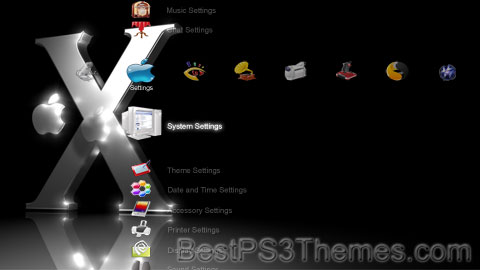
(8 backgrounds)
P3T Unpacker v0.12
Copyright (c) 2007. Anoop Menon
This program unpacks Playstation 3 Theme files (.p3t) so that you can touch-up an existing theme to your likings or use a certain wallpaper from it (as many themes have multiple). But remember, if you use content from another theme and release it, be sure to give credit!
Download for Windows: p3textractor.zip
Instructions:
Download p3textractor.zip from above. Extract the files to a folder with a program such as WinZip or WinRAR. Now there are multiple ways to extract the theme.
The first way is to simply open the p3t file with p3textractor.exe. If you don’t know how to do this, right click the p3t file and select Open With. Alternatively, open the p3t file and it will ask you to select a program to open with. Click Browse and find p3textractor.exe from where you previously extracted it to. It will open CMD and extract the theme to extracted.[filename]. After that, all you need to do for any future p3t files is open them and it will extract.
The second way is very simple. Just drag the p3t file to p3textractor.exe. It will open CMD and extract the theme to extracted.[filename].
For the third way, first put the p3t file you want to extract into the same folder as p3textractor.exe. Open CMD and browse to the folder with p3extractor.exe. Enter the following:
p3textractor filename.p3t [destination path]Replace filename with the name of the p3t file, and replace [destination path] with the name of the folder you want the files to be extracted to. A destination path is not required. By default it will extract to extracted.filename.
Soul Calibur Montage .42 v2a (With Sound)
Soul Calibur Montage .42 v2a (With Sound) theme by MONTAGE MIK
Download: SoulCaliburMontage42v2a.p3t
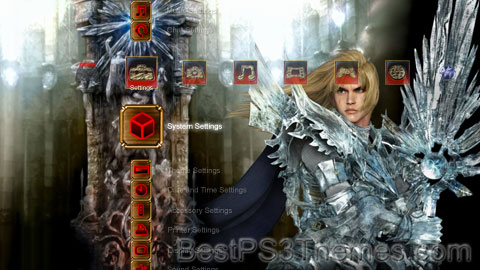
(16 backgrounds)
P3T Unpacker v0.12
Copyright (c) 2007. Anoop Menon
This program unpacks Playstation 3 Theme files (.p3t) so that you can touch-up an existing theme to your likings or use a certain wallpaper from it (as many themes have multiple). But remember, if you use content from another theme and release it, be sure to give credit!
Download for Windows: p3textractor.zip
Instructions:
Download p3textractor.zip from above. Extract the files to a folder with a program such as WinZip or WinRAR. Now there are multiple ways to extract the theme.
The first way is to simply open the p3t file with p3textractor.exe. If you don’t know how to do this, right click the p3t file and select Open With. Alternatively, open the p3t file and it will ask you to select a program to open with. Click Browse and find p3textractor.exe from where you previously extracted it to. It will open CMD and extract the theme to extracted.[filename]. After that, all you need to do for any future p3t files is open them and it will extract.
The second way is very simple. Just drag the p3t file to p3textractor.exe. It will open CMD and extract the theme to extracted.[filename].
For the third way, first put the p3t file you want to extract into the same folder as p3textractor.exe. Open CMD and browse to the folder with p3extractor.exe. Enter the following:
p3textractor filename.p3t [destination path]Replace filename with the name of the p3t file, and replace [destination path] with the name of the folder you want the files to be extracted to. A destination path is not required. By default it will extract to extracted.filename.
Soul Calibur Montage .42 v1a (No Sound)
Soul Calibur Montage .42 v1a (No Sound) theme by MONTAGE MIK
Download: SoulCaliburMontage42v1a.p3t
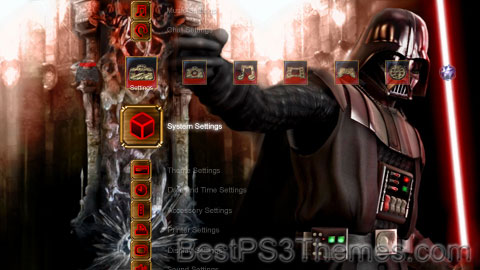
(16 backgrounds)
P3T Unpacker v0.12
Copyright (c) 2007. Anoop Menon
This program unpacks Playstation 3 Theme files (.p3t) so that you can touch-up an existing theme to your likings or use a certain wallpaper from it (as many themes have multiple). But remember, if you use content from another theme and release it, be sure to give credit!
Download for Windows: p3textractor.zip
Instructions:
Download p3textractor.zip from above. Extract the files to a folder with a program such as WinZip or WinRAR. Now there are multiple ways to extract the theme.
The first way is to simply open the p3t file with p3textractor.exe. If you don’t know how to do this, right click the p3t file and select Open With. Alternatively, open the p3t file and it will ask you to select a program to open with. Click Browse and find p3textractor.exe from where you previously extracted it to. It will open CMD and extract the theme to extracted.[filename]. After that, all you need to do for any future p3t files is open them and it will extract.
The second way is very simple. Just drag the p3t file to p3textractor.exe. It will open CMD and extract the theme to extracted.[filename].
For the third way, first put the p3t file you want to extract into the same folder as p3textractor.exe. Open CMD and browse to the folder with p3extractor.exe. Enter the following:
p3textractor filename.p3t [destination path]Replace filename with the name of the p3t file, and replace [destination path] with the name of the folder you want the files to be extracted to. A destination path is not required. By default it will extract to extracted.filename.
Spiderman Trilogy
Alien #2
Alien theme by carnage
Download: Alien_2.p3t
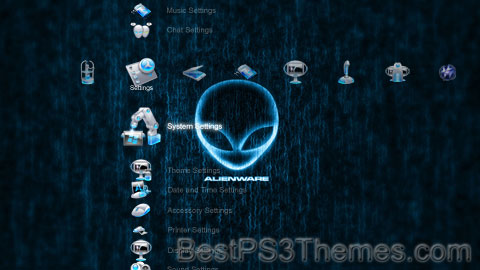
(1 background)
Alien primarily refers to:
- Alien (law), a person in a country who is not a national of that country
- Enemy alien, the above in times of war
- Extraterrestrial life, life which does not originate from Earth
- Specifically, a lifeform with extraterrestrial intelligence
- For fictional extraterrestrial life, see Extraterrestrials in fiction
- Introduced species, a species not native to its environment
Alien(s), or The Alien(s) may also refer to:
Science and technology[edit]
- AliEn (ALICE Environment), a grid framework
- Alien (file converter), a Linux program
- Alien Technology, a manufacturer of RFID technology
Arts and entertainment[edit]
- Alien (franchise), a media franchise
- Xenomorph, the titular alien in the franchise
Films[edit]
- Alien (film), a 1979 film by Ridley Scott
- Aliens (film), second film in the franchise from 1986 by James Cameron
- Alien 3, third film in the franchise from 1992 by David Fincher
- Alien Resurrection, fourth film in the franchise from 1997 by Jean-Pierre Jeunet
- Alien vs. Predator (film), fifth film in the franchise from 2004 by Paul W. S. Anderson
- Aliens vs. Predator: Requiem, sixth film in the franchise from 2007 by the Brothers Strause
- Prometheus (2012 film), seventh film in the franchise from 2012 by Ridley Scott
- Alien: Covenant, eighth film in the franchise from 2017 by Ridley Scott
- Alien: Romulus, ninth film in the franchise from 2024 by Fede Álvarez
- Alien 2: On Earth, a 1980 unofficial sequel of the 1979 Alien film
- Alien Visitor (also titled Epsilon) (1995 film) Australian–Italian science fiction film by Rolf de Heer
- The Alien (2016 film), a 2016 Mexican film
- The Alien (unproduced film), an incomplete 1960s Indian–American film
- Alienoid, a 2022 South Korean film
Literature[edit]
- Alien novels, an extension of the Alien franchise
- Aliens: Colonial Marines Technical Manual, a 1995 book by Lee Brimmicombe-Wood, a guide to the fictional United States Colonial Marines
- Aliens (Tappan Wright novel), a 1902 novel by Mary Tappan Wright
- Aliens! (anthology) a 1980 anthology of science fiction edited by Gardner Dozois and Jack Dann
- The Alien (novel), the eighth book in the Animorphs series by Katherine Applegate
- The Aliens (play), a 2010 play by Annie Baker
Music[edit]
Performers[edit]
- Alien (band), a 1980s Swedish rock group
- The Aliens (Australian band), a 1970s new wave group
- The Aliens (Scottish band), a 2005–2008 rock group
- The Aliens, the backing band for the American musician Jared Louche on his 1999 solo debut album Covergirl
Albums[edit]
- Alien (soundtrack), 1979
- Alien (Beam album), 2022
- Alien (Northlane album), 2019
- Alien (Strapping Young Lad album), 2005
- Alien, a 1989 EP by Tankard
- Aliens (soundtrack), 1987
Songs[edit]
- "Alien" (Britney Spears song), 2013
- "Alien" (Jonas Blue and Sabrina Carpenter song), 2018
- "Alien", a song by Atlanta Rhythm from the album Quinella, 1981
- "Alien", a song by Bush from the album Sixteen Stone, 1994
- "Alien", a song by Dead Letter Circus from the EP Dead Letter Circus, 2007
- "Alien", a song by Erasure from the album Loveboat, 2000
- "Alien", a song by Japan from the album Quiet Life, 1979
- "Alien", a song by Lamb from the album Fear of Fours, 1999
- "Alien", a song by Nerina Pallot from the album Dear Frustrated Superstar, 2001
- "Alien", a song by P-Model from the album Landsale, 1980
- "Alien", a song by Pennywise from the album Straight Ahead, 1999
- "Alien", a song by Stray Kids from the album SKZ-Replay, 2022
- "Alien", a song by Structures from the album Life Through a Window, 2014
- "Alien", a song by the National from the album First Two Pages of Frankenstein, 2023
- "Alien", a song by Third Day from the album Conspiracy No. 5, 1997
- "Alien", a song by Thriving Ivory from the album Thriving Ivory, 2003
- "Alien", a song by Tokio Hotel from the album Humanoid, 2009
- "Alien", a 2018 song by Beach House
- "Alien", a 2020 song by Lee Su-hyun
- "Alien", a 2020 song by Dennis Lloyd
- "Aliens" (song), a 2017 song by Coldplay
- "Aliens", a 1984 song by Warlord
- "The Alien", a song by Dream Theater from the album A View from the Top of the World, 2021
Video games[edit]
- Alien (1982 video game), a 1982 maze game based on the 1979 film
- Alien (1984 video game), based on the film
- Aliens (1990 video game), a game by Konami, based on the sequel of the film
- Alien: Isolation, a 2014 video game based on the Alien science fiction horror film series
- Aliens (1982 video game), a text-only clone of Space Invaders written for the CP/M operating system on the Kaypro computer
Other media[edit]
- Alien (Armenian TV series), a 2017 melodrama series
- Alien: Isolation – The Digital Series, web series in the Alien franchise from 2019 by Fabien Dubois
- Alien (American TV series), an upcoming science fiction horror television series in the franchise by Noah Hawley
- Alien (sculpture), a 2012 work by David Breuer-Weil, in Mottisfont, Hampshire, England
- Aliens (Dark Horse Comics line)
- The Aliens (TV series), 2016 British sci-fi television series
- "Aliens" (Roseanne), a 1992 television episode
Other uses[edit]
- Alien (shipping company), a Russian company
- Alien Sun (born 1974), Singaporean actress
- Alien, a perfume by Thierry Mugler
- Alian District (Alien), in Taiwan
See also[edit]
- Alians, an Islamic order
- Alien Project (disambiguation)
- Alien vs. Predator (disambiguation)
- Astrobiology, the study of hypothetical alien life
- ATLiens, a 1996 album by OutKast
- Predator (disambiguation)
- UFO (disambiguation)
- Unidentified flying object (disambiguation)
- All pages with titles beginning with Alien
- All pages with titles containing Alien
The Simpsons #8
The Simpsons theme by Yvon12
Download: Simpsons_8.p3t
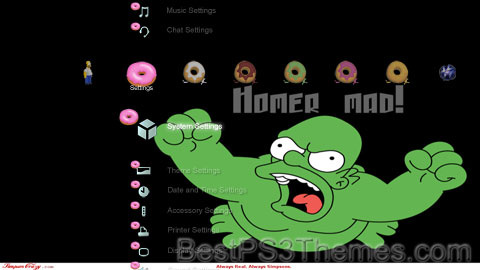
(1 background)
| The Simpsons | |
|---|---|
 | |
| Genre | |
| Created by | Matt Groening |
| Based on | The Simpsons shorts by Matt Groening |
| Developed by |
|
| Showrunners |
|
| Voices of | |
| Theme music composer | Danny Elfman |
| Opening theme | "The Simpsons Theme" |
| Ending theme | "The Simpsons Theme" (reprise) |
| Composers | Richard Gibbs (1989–1990) Alf Clausen (1990–2017) Bleeding Fingers Music (2017–present) |
| Country of origin | United States |
| Original language | English |
| No. of seasons | 35 |
| No. of episodes | 768 (list of episodes) |
| Production | |
| Executive producers | List
|
| Producers |
|
| Editors |
|
| Running time | 21–24 minutes |
| Production companies |
|
| Original release | |
| Network | Fox |
| Release | December 17, 1989 – present |
The Simpsons is an American animated sitcom created by Matt Groening for the Fox Broadcasting Company.[1][2][3] Developed by Groening, James L. Brooks, and Sam Simon, the series is a satirical depiction of American life, epitomized by the Simpson family, which consists of Homer, Marge, Bart, Lisa, and Maggie. Set in the fictional town of Springfield, it caricatures society, Western culture, television, and the human condition.
The family was conceived by Groening shortly before a solicitation for a series of animated shorts with producer Brooks. He created a dysfunctional family and named the characters after his own family members, substituting Bart for his own name; he thought Simpson was a funny name in that it sounded similar to "simpleton".[4] The shorts became a part of The Tracey Ullman Show on April 19, 1987. After three seasons, the sketch was developed into a half-hour prime time show and became Fox's first series to land in the Top 30 ratings in a season (1989–1990).
Since its debut on December 17, 1989, 768 episodes of the show have been broadcast. It is the longest-running American animated series, longest-running American sitcom, and the longest-running American scripted primetime television series, both in seasons and individual episodes. A feature-length film, The Simpsons Movie, was released in theaters worldwide on July 27, 2007, to critical and commercial success, with a sequel in development as of 2018. The series has also spawned numerous comic book series, video games, books, and other related media, as well as a billion-dollar merchandising industry. The Simpsons is a joint production by Gracie Films and 20th Television.[5]
On January 26, 2023, the series was renewed for its 35th and 36th seasons, taking the show through the 2024–25 television season.[6] Both seasons contain a combined total of 51 episodes. Seven of these episodes are season 34 holdovers, while the other 44 will be produced in the production cycle of the upcoming seasons, bringing the show's overall episode total up to 801.[7] Season 35 premiered on October 1, 2023.[8]
The Simpsons received widespread acclaim throughout its early seasons in the 1990s, which are generally considered its "golden age". Since then, it has been criticized for a perceived decline in quality. Time named it the 20th century's best television series,[9] and Erik Adams of The A.V. Club named it "television's crowning achievement regardless of format".[10] On January 14, 2000, the Simpson family was awarded a star on the Hollywood Walk of Fame. It has won dozens of awards since it debuted as a series, including 37 Primetime Emmy Awards, 34 Annie Awards, and 2 Peabody Awards. Homer's exclamatory catchphrase of "D'oh!" has been adopted into the English language, while The Simpsons has influenced many other later adult-oriented animated sitcom television series.
Premise[edit]
Characters[edit]
The main characters are the Simpson family, who live in the fictional "Middle America" town of Springfield.[11] Homer, the father, works as a safety inspector at the Springfield Nuclear Power Plant, a position at odds with his careless, buffoonish personality. He is married to Marge (née Bouvier), a stereotypical American housewife and mother. They have three children: Bart, a ten-year-old troublemaker and prankster; Lisa, a precocious eight-year-old activist; and Maggie, the baby of the family who rarely speaks, but communicates by sucking on a pacifier. Although the family is dysfunctional, many episodes examine their relationships and bonds with each other and they are often shown to care about one another.[12]
The family also owns a greyhound, Santa's Little Helper, (who first appeared in the episode "Simpsons Roasting on an Open Fire" and a cat, Snowball II, who is replaced by a cat also called Snowball II in the fifteenth-season episode "I, (Annoyed Grunt)-Bot".[13] Extended members of the Simpson and Bouvier family in the main cast include Homer's father Abe and Marge's sisters Patty and Selma. Marge's mother Jacqueline and Homer's mother Mona appear less frequently.

The show includes a vast array of quirky supporting characters, which include Homer's friends Barney Gumble, Lenny Leonard and Carl Carlson; the school principal Seymour Skinner and staff members such as Edna Krabappel and Groundskeeper Willie; students such as Milhouse Van Houten, Nelson Muntz and Ralph Wiggum; shopkeepers such as Apu Nahasapeemapetilon, Comic Book Guy and Moe Szyslak; government figures Mayor "Diamond" Joe Quimby and Clancy Wiggum; next-door neighbor Ned Flanders; local celebrities such as Krusty the Clown and news reporter Kent Brockman; nuclear tycoon Montgomery Burns and his devoted assistant Waylon Smithers; and dozens more.
The creators originally intended many of these characters as one-time jokes or for fulfilling needed functions in the town. A number of them have gained expanded roles and subsequently starred in their own episodes. According to Matt Groening, the show adopted the concept of a large supporting cast from the comedy show SCTV.[14]
Continuity and the floating timeline[edit]
Despite the depiction of yearly milestones such as holidays or birthdays passing, the characters never age. The series uses a floating timeline in which episodes generally take place in the year the episode is produced. Flashbacks and flashforwards do occasionally depict the characters at other points in their lives, with the timeline of these depictions also generally floating relative to the year the episode is produced. For example, the 1991 episodes "The Way We Was" and "I Married Marge" depict Homer and Marge as high schoolers in the 1970s who had Bart (who is always 10 years old) in the early '80s, while the 2008 episode "That '90s Show" depicts Homer and Marge as a childless couple in the '90s, and the 2021 episode "Do Pizza Bots Dream of Electric Guitars" portrays Homer as an adolescent in the same period. The 1995 episode "Lisa's Wedding" takes place during Lisa's college years in the then-future year of 2010, the same year the show began airing its 22nd season, in which Lisa was still 8. Regarding the contradictory flashbacks, Selman stated that "they all kind of happened in their imaginary world."[15]
The show follows a loose and inconsistent continuity. For example, Krusty the Clown may be able to read in one episode, but not in another. However, it is consistently portrayed that he is Jewish, that his father was a rabbi, and that his career began in the 1960s. The latter point introduces another snag in the floating timeline: historical periods that are a core part of a character's backstory remain so even when their age makes it unlikely or impossible, such as Grampa Simpson and Principal Skinner's respective service in World War II and Vietnam.
The only episodes not part of the series' main canon are the Treehouse of Horror episodes, which often feature the deaths of main characters. Characters who die in "regular" episodes, such as Maude Flanders, Mona Simpson and Edna Krabappel, however, stay dead. Most episodes end with the status quo being restored, though occasionally major changes will stick, such as Lisa's conversions to vegetarianism and Buddhism, the divorce of Milhouse van Houten's parents, and the marriage and subsequent parenthood of Apu and Manjula.
Setting[edit]
The Simpsons takes place in a fictional American town called Springfield. Although there are many real settlements in America named Springfield,[16] the town the show is set in is fictional. The state it is in is not established. In fact, the show is intentionally evasive with regard to Springfield's location.[17] Springfield's geography and that of its surroundings is inconsistent: from one episode to another, it may have coastlines, deserts, vast farmland, mountains, or whatever the story or joke requires.[18] Groening has said that Springfield has much in common with Portland, Oregon, the city where he grew up.[19] Groening has said that he named it after Springfield, Oregon, and the fictitious Springfield which was the setting of the series Father Knows Best. He "figured out that Springfield was one of the most common names for a city in the U.S. In anticipation of the success of the show, I thought, 'This will be cool; everyone will think it's their Springfield.' And they do."[20] Many landmarks, including street names, have connections to Portland.[21]
Production[edit]
Development[edit]
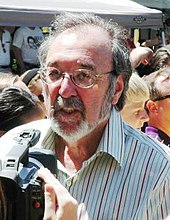
When producer James L. Brooks was working on the television variety show The Tracey Ullman Show, he decided to include small animated sketches before and after the commercial breaks. Having seen one of cartoonist Matt Groening's Life in Hell comic strips, Brooks asked Groening to pitch an idea for a series of animated shorts. Groening initially intended to present an animated version of his Life in Hell series.[22] However, Groening later realized that animating Life in Hell would require the rescinding of publication rights for his life's work. He therefore chose another approach while waiting in the lobby of Brooks's office for the pitch meeting, hurriedly formulating his version of a dysfunctional family that became the Simpsons.[22][23] He named the characters after his own family members, substituting "Bart" for his own name, adopting an anagram of the word brat.[22]
The Simpson family first appeared as shorts in The Tracey Ullman Show on April 19, 1987.[24] Groening submitted only basic sketches to the animators and assumed that the figures would be cleaned up in production. However, the animators merely re-traced his drawings, which led to the crude appearance of the characters in the initial shorts.[22] The animation was produced domestically at Klasky Csupo,[25][26] with Wes Archer, David Silverman, and Bill Kopp being animators for the first season.[27] The colorist, "Georgie" Gyorgyi Kovacs Peluce (Kovács Györgyike)[28][29][30][31][32][33] made the characters yellow; as Bart, Lisa and Maggie have no hairlines, she felt they would look strange if they were flesh-colored. Groening supported the decision, saying: "Marge is yellow with blue hair? That's hilarious — let's do it!"[27]
In 1989, a team of production companies adapted The Simpsons into a half-hour series for the Fox Broadcasting Company. The team included the Klasky Csupo animation house. Brooks negotiated a provision in the contract with the Fox network that prevented Fox from interfering with the show's content.[34] Groening said his goal in creating the show was to offer the audience an alternative to what he called "the mainstream trash" that they were watching.[35] The half-hour series premiered on December 17, 1989, with "Simpsons Roasting on an Open Fire".[36] "Some Enchanted Evening" was the first full-length episode produced, but it did not broadcast until May 1990, as the last episode of the first season, because of animation problems.[37] In 1992, Tracey Ullman filed a lawsuit against Fox, claiming that her show was the source of the series' success. The suit said she should receive a share of the profits of The Simpsons[38]—a claim rejected by the courts.[39]
Executive producers and showrunners[edit]

List of showrunners throughout the series' run:
- Season 1–2: Matt Groening, James L. Brooks, & Sam Simon
- Season 3–4: Al Jean & Mike Reiss
- Season 5–6: David Mirkin
- Season 7–8: Bill Oakley & Josh Weinstein
- Season 9–12: Mike Scully
- Season 13–31: Al Jean
- Season 32–present: Al Jean & Matt Selman
Matt Groening and James L. Brooks have served as executive producers during the show's entire history, and also function as creative consultants. Sam Simon, described by former Simpsons director Brad Bird as "the unsung hero" of the show,[40] served as creative supervisor for the first four seasons. He was constantly at odds with Groening, Brooks and the show's production company Gracie Films and left in 1993.[41] Before leaving, he negotiated a deal that sees him receive a share of the profits every year, and an executive producer credit despite not having worked on the show since 1993,[41][42] at least until his passing in 2015.[43] A more involved position on the show is the showrunner, who acts as head writer and manages the show's production for an entire season.[27]
Writing[edit]
The first team of writers, assembled by Sam Simon, consisted of John Swartzwelder, Jon Vitti, George Meyer, Jeff Martin, Al Jean, Mike Reiss, Jay Kogen and Wallace Wolodarsky.[44] Newer Simpsons' writing teams typically consist of sixteen writers who propose episode ideas at the beginning of each December.[45] The main writer of each episode writes the first draft. Group rewriting sessions develop final scripts by adding or removing jokes, inserting scenes, and calling for re-readings of lines by the show's vocal performers.[46] Until 2004,[47] George Meyer, who had developed the show since the first season, was active in these sessions. According to long-time writer Jon Vitti, Meyer usually invented the best lines in a given episode, even though other writers may receive script credits.[46] Each episode takes six months to produce so the show rarely comments on current events.[48]
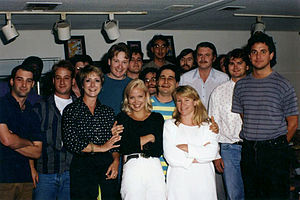
Credited with sixty episodes, John Swartzwelder is the most prolific writer on The Simpsons.[49] One of the best-known former writers is Conan O'Brien, who contributed to several episodes in the early 1990s before replacing David Letterman as host of the talk show Late Night.[50] English comedian Ricky Gervais wrote the episode "Homer Simpson, This Is Your Wife", becoming the first celebrity both to write and guest star in the same episode.[51] Seth Rogen and Evan Goldberg, writers of the film Superbad, wrote the episode "Homer the Whopper", with Rogen voicing a character in it.[52]
At the end of 2007, the writers of The Simpsons went on strike together with the other members of the Writers Guild of America, East. The show's writers had joined the guild in 1998.[53]
In May 2023, the writers of The Simpsons went on strike together with the other members of the Writers Guild of America, East.[54][55]
